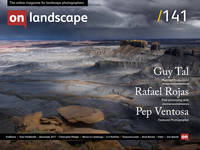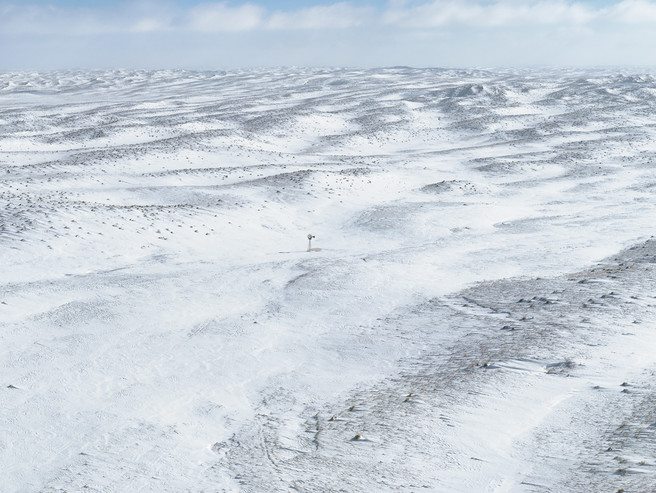Yoav Friedlander chooses one of his favourite images
Yoav Friedlander
I grew up in the valleys of the Judean Desert between Jerusalem and the Dead Sea. I am native to Israel but uprooted from my past. After High School I’ve joined the Israeli army for a mandatory service of 3 years.
It is Summer here in New York, but I can feel the frost radiating cold from Andrew L. Moore’s photograph "Sandhills Blizzard" Cherry County, Nebraska 2013. You see, I, myself, am a child of the desert. And this empty landscape brings about early memories from my childhood roaming the low hills that roll down towards the Judean Desert. But there, and then, snow was almost impossible, and a blizzard, never heard of. I had never been to Nebraska or the Great Plains of North America, but Andrew Moore takes me there, and it is as cold as the desert is hot.
The striking beauty of this snow coated frosty landscape, doesn’t tell right away how harsh, hostile and unforgiving it is on its inhabitants. First, you are in awe of the sheer size of the open landscape in comparison to our proof of existence, a windmill. The imagination takes you there, towards that windmill, the signifier. The snow had frozen, and it is not soft nor fluffy. The wind is blowing hard because nothing around will rise against it, the sound is maddening and the ears turn red pumping with sharp pain. It seemed so close, a hundred yards or so, but it is actually a long mile walk. You get to the windmill, but now what?
The freedom to roam is a nice illusion. You are actually lost, and you are a prisoner of food and water supply, connected by an invisible extension cord, only as far from base camp as it may last. You are free to choose to travel in any direction but not will make any sense. You might think of reaching for the windmill like conquering a mountain peak, but upon your arrival, its magic will fade. That is exactly the genius of this photograph. The windmill only makes sense from a far, against all odds, enduring the merciless landscape surrounding it. The windmill gives scale to the landscape rather than the other way around.
The aerial perspective of this picture is a perfected visual fingerprint by an artist who has mastered the medium. This specific type of a vantage point is an answer to a landscape that is actually hard to photograph, or perhaps it is better to say - capture.
At this point, Andrew Moore arrives at a similar conclusion of other great photographers who mastered the landscape with their cameras - elevation opens up the ground field of view. In many of the photographs documenting old masters at work, they are found situated atop of a ladder. The most memorable of them all is no other than, Ansel Adams, shooting his famous masterpieces standing with his camera on top of a special platform installed on the roof of his van. But the Great Plains initially appear so flat that a ladder or a platform on a roof of a car was not enough. After a great deal of travelling around He realised that he had to get some wings.
Now, this is where the magic happens. Andrew took it to the air but remained low, dangerously low in fact. To achieve the perfect vantage point he joined forces with Doug Dean, a crop duster pilot, and photography enthusiast, whom Moore dedicated Dirt Meridian book too. Using Doug’s piloting skills, flying low over crops, Moore had managed to find the sweet spot for shooting this impossible landscape; at times flying as low as 30ft above ground. At these low altitudes, and with the speed of an aeroplane, he discovered a way to roam the vast land and to capture its essence. High enough for the land to open up, but not too high where human presence is visible and the landscape is not a collection of abstracted shapes.
What I love so much about this photograph, and other photographs from Andrew Moore’s book, Dirt Meridian, is their ability to tell the story of this landscape, and us, in significantly in it.
The image is taken from the book called "Dirt Meridian", published in 2015 by Damiani Editore.
Watch the short film with Andrew to find out more of the Dirt Merdian project:
https://www.youtube.com/watch?v=DURfYCi3Dao
Do you want to write about one of your favourite images? Has it inspired your photography or taken you off in another direction? We'd love to hear from you, so get in touch on our submission form.


